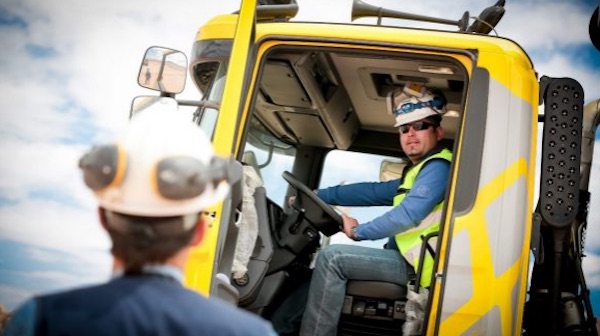By analyst
By Andrew Topf
Scania is a multi-faceted equipment and services company with four main business areas: trucks, buses/coaches, engines, and services, with the latter including parts, fleet management, workshop, financial and driver services, rental, and used vehicles.
In 2016 the 126-year-old Swedish company sold over 73,000 trucks, 8,253 buses/coaches, 7,800 engines and services worth SEK (Swedish krona) 21.6 billion. Europe was the largest market for Scania trucks, representing two-thirds of sales, followed by Asia at 13% and Latin America at 10%.
“We are, let’s say, an on-road product from the beginning, but with some adjustments, we are doing very well in the mines. And we have much lower capex”: Scania Mining Managing Director Bjorn Winblad
Five years ago Stockholm-based Scania decided to carve a mining niche into a new area, Scania Mining, with the goal being to bring together products and solutions from the company’s other divisions and gear them strictly towards mining.
In a recent interview, Scania Mining Managing Director Bjorn Winblad said that Scania holds a strong market position in the production of smaller-class mining trucks, known in the U.S. as Class 8 (>33,000 pounds or 14,969 kg) vehicles. While Scania’s Class 8 trucks start off as on-road vehicles, they are modular, meaning that their components can be built to different specifications. The Class 8s have been modified with heavier racks and frames, for example, so that the trucks are suitable for off-road, harsh conditions found in mines.
“We put these components together and make a very efficient mining truck,” says Winblad, who compares the modular components aspect of the trucks to Lego.
Scania’s 30 to 50-ton payload trucks are ideal for remote mines, where they can form a typical haul-truck circuit, albeit with smaller vehicles compared to traditional, larger mining trucks. Scania’s high parts availability and other factors make the trucks competitive with dominant mining truck players like Caterpillar and Komatsu, according to Winblad:
“We have a very good value proposition to compete with the bigger, yellow equipment, as we call them: The Komatsu and Caterpillar (NYSE:CAT). We are, let’s say, an on-road product from the beginning, but with some adjustments, we are doing very well in the mines. And we have much lower capex,” he said. “We have much better fuel consumption. We can run faster and a few other things. Meaning that we actually can compete with the yellow ones. And that we have done in some parts of the world. We have thousands of vehicles in the mines in Brazil, for example. We have also a lot in mines in Indonesia and India.”
Breaking that down a bit further, Scania can produce trucks at a lower cost than competitors because of high-volume production of components from its factories, which pushes the overall cost of the truck down. The trucks have a better ratio between empty and loaded compared to larger mining trucks, resulting in better fuel consumption. And the lighter footprint on site means less haul road maintenance for the mine operator.
Along with operation-focused …read more
Source:: Infomine
The post Scania Mining offering smaller mining-truck model to compete with “yellow iron” appeared first on Junior Mining Analyst.

